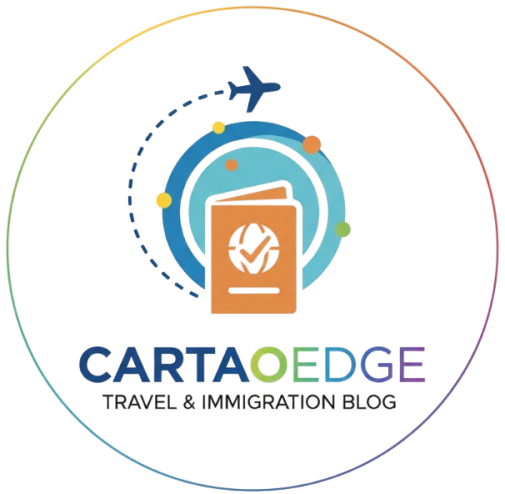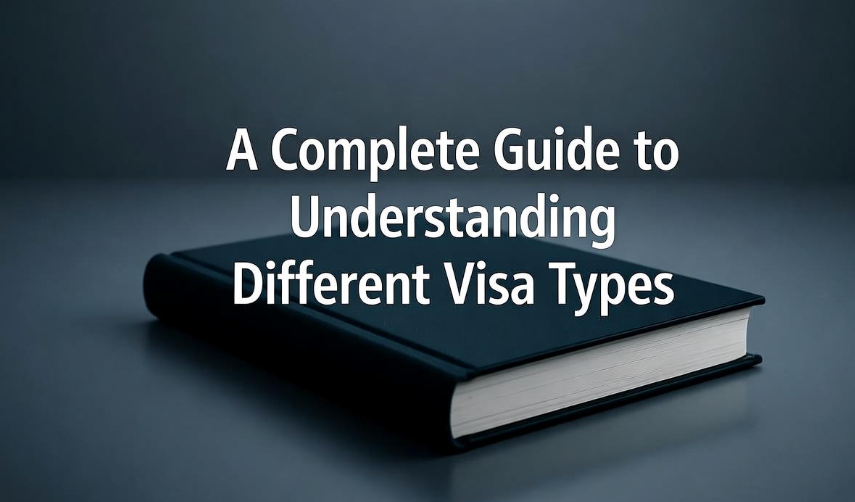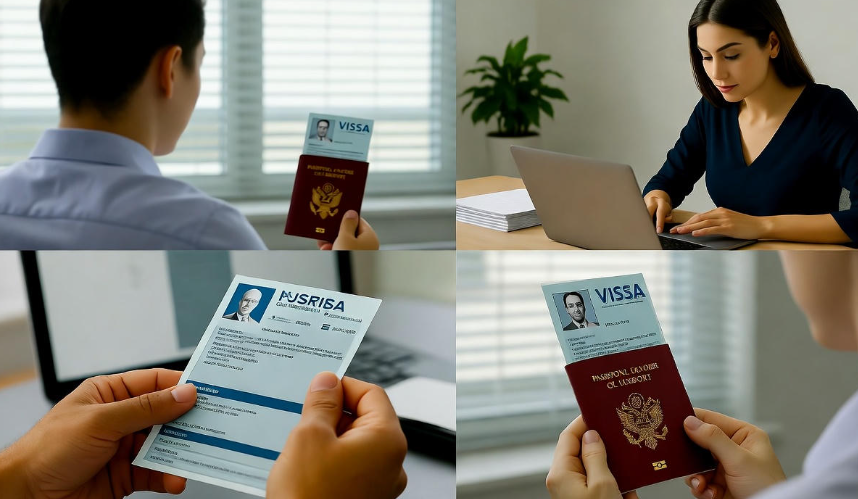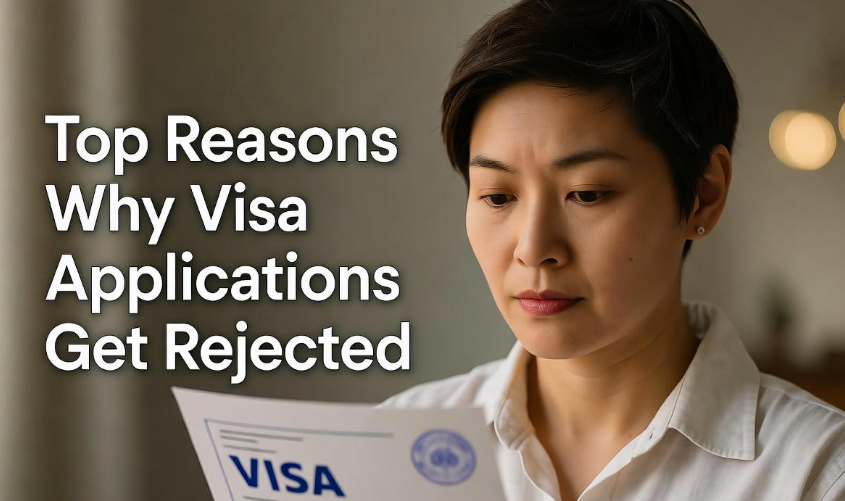Travelling abroad is an exciting experience — whether it’s for study, work, business, or just to explore the world. But before you can pack your bags and go, there’s one crucial thing you need to understand — visas. A visa is basically your “permission slip” to enter another country. It tells the destination country why you’re coming, how long you’ll stay, and what you’re allowed to do there.
Many people get confused about the different types of visas because every country has its own set of rules and categories. So let’s break it down in simple language so you can finally understand what all those visa names really mean.
What is a Visa?
A visa is an official document issued by a country’s government that allows you to enter, stay, or leave that country for a certain purpose. It can be a sticker or stamp on your passport, or sometimes even an electronic authorization (like an e-Visa).
Why do countries issue visas?
Because every country wants to keep track of who enters and why. Visas help them control immigration, maintain security, and ensure visitors are there for legitimate reasons.
Two Main Visa Categories
To make things simple, almost all visas fall into two main groups:
| Category | Purpose | Example |
|---|---|---|
| Non-Immigrant Visa | For short-term visits (study, work, travel, business, etc.) | Student Visa, Tourist Visa, Business Visa |
| Immigrant Visa | For permanent residence or long-term settlement | Green Card (U.S.), Skilled Migration Visa (Australia) |
Let’s understand these and the other common types one by one.
Tourist Visa ️
This is the most common visa. It’s for people who just want to visit a country for a short period — maybe to explore cities, meet family, or go sightseeing.
Key points:
-
You cannot work or study with this visa.
-
Usually valid for a few weeks to a few months.
-
Often requires proof of accommodation, return ticket, and enough money for your stay.
Example:
-
Schengen Tourist Visa (for Europe)
-
U.S. B2 Visitor Visa
-
UK Standard Visitor Visa
Student Visa
If you’re going abroad for education — to attend university, college, or a training program — you’ll need a student visa.
Important details:
-
You must have an acceptance letter from an approved institution.
-
You may be allowed limited part-time work.
-
Duration depends on your course length.
Examples:
| Country | Visa Name |
|---|---|
| USA | F-1 Student Visa |
| UK | Tier 4 (Student) Visa |
| Canada | Study Permit |
| Australia | Subclass 500 Student Visa |
Studying abroad is not just about classes — it’s about experiencing a new culture, building a network, and sometimes, even finding job opportunities later on.
Work Visa
A work visa allows you to take up employment in another country. Depending on the job type, experience, and employer sponsorship, there are several sub-categories.
Common features:
-
Often requires a job offer before application.
-
Employer may need to sponsor you.
-
Usually temporary but renewable.
Popular work visas include:
| Country | Work Visa Type | Duration |
|---|---|---|
| USA | H-1B (Skilled Worker) | Up to 3 years, extendable |
| Canada | Temporary Work Permit | Varies |
| UK | Skilled Worker Visa | 2–5 years |
| UAE | Employment Visa | 2 years |
Some countries also offer Working Holiday Visas for young people who want to travel and work part-time — perfect for exploring and earning together!
Business Visa
If your purpose is to attend meetings, conferences, or explore business opportunities — you’ll need a business visa.
Things to know:
-
It doesn’t allow full-time employment.
-
Usually short-term, from a few days to months.
-
You may need an invitation letter from a company or partner abroad.
Business visas are ideal for entrepreneurs, investors, and company representatives expanding globally.
Transit Visa ⏱️
Sometimes you’re just passing through a country to catch another flight. That’s when you need a transit visa.
Quick facts:
-
Valid for only 24–72 hours.
-
Needed if your layover requires leaving the airport or if the country mandates it.
Example: If you have a long stop in the UAE while flying from Pakistan to Canada, you might need a UAE transit visa depending on your airline and duration.
Immigrant Visa
Unlike non-immigrant visas, this one is for people who plan to live permanently in another country.
Key points:
-
Usually requires family sponsorship, job offer, or investment.
-
Grants permanent residency after approval.
-
Can lead to citizenship after some years.
Examples include:
-
U.S. Green Card
-
Canada PR Visa
-
Australia Skilled Migration Visa
These visas often take longer to process but offer the biggest long-term benefits.
Spouse or Family Visa ❤️
If your partner or family member lives abroad, you can apply for a family reunification visa.
Important info:
-
Requires proof of relationship (like marriage certificate).
-
Sponsor must meet income and housing requirements.
-
Allows you to live (and sometimes work) with your family abroad.
Many countries value family unity, so these visas are quite common — though documentation needs to be very accurate.
Investor or Startup Visa
Many countries now offer visas for investors and entrepreneurs who can contribute to their economy.
Requirements often include:
-
A certain investment amount or business plan.
-
Proof of funds.
-
Potential to create jobs locally.
| Country | Visa Type | Minimum Investment |
|---|---|---|
| USA | EB-5 Investor Visa | $800,000+ |
| Canada | Start-Up Visa | Depends on business |
| UAE | Golden Visa | AED 2 million+ investment |
| UK | Innovator Founder Visa | £50,000+ business plan |
These visas are ideal for business-minded people who want both profit and residency.
Refugee or Asylum Visa ️
This visa is given to people fleeing their home countries due to war, violence, or persecution.
Facts:
-
Granted on humanitarian grounds.
-
Applicants must prove real danger or threat in their home country.
-
Often processed through the UN or government agencies.
Countries like Canada, Germany, and Sweden are known for their strong asylum policies.
Cultural Exchange or Internship Visa
This one is perfect for youth who want to learn or train abroad. Examples include cultural exchange programs, internships, or short-term work-travel experiences.
You’ll need:
-
A program sponsor.
-
Proof of financial support.
-
Return ticket (in most cases).
Example: The U.S. J-1 Exchange Visitor Visa.
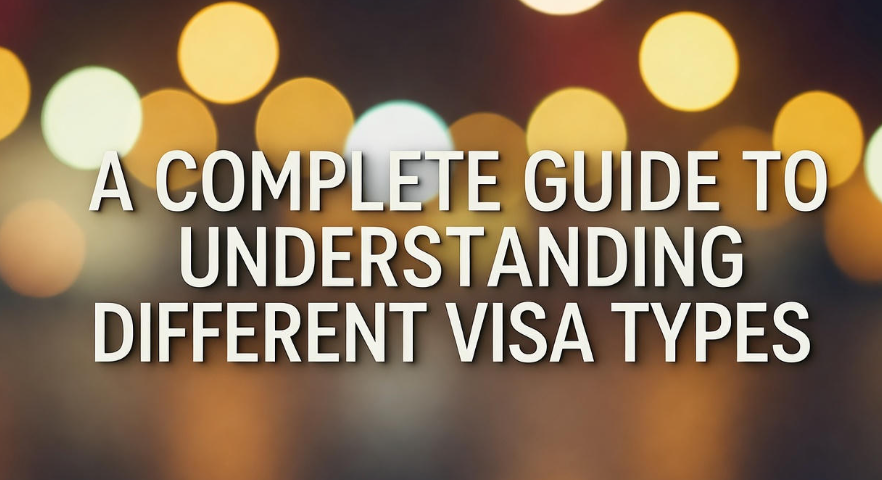
Digital Nomad Visa
A newer and very trendy visa type! It’s for people who work remotely while living in another country — usually freelancers, remote employees, or digital entrepreneurs.
Highlights:
-
Usually valid for 6 months to 2 years.
-
Requires proof of remote income.
-
Lets you live legally while working online.
Countries like Portugal, UAE, Indonesia (Bali), and Estonia now offer such visas.
E-Visa & Visa-on-Arrival
In recent years, many countries made it easier with e-Visas or visa-on-arrival options.
| Type | How It Works | Example |
|---|---|---|
| E-Visa | Apply online and get approval digitally. | India, Turkey, Kenya |
| Visa-on-Arrival | Get your visa when you land at the airport. | Thailand, UAE, Maldives |
These are ideal for short visits and save a lot of paperwork.
Tips for Choosing the Right Visa ✅
-
Know your purpose — Study, work, or travel? Your purpose decides your visa type.
-
Check official embassy websites for the latest requirements.
-
Apply early — Some visas take months!
-
Keep documents ready — passport, photos, bank statements, invitation letters, etc.
-
Don’t overstay — It can cause bans or fines.
Common Visa Denial Reasons
Even a small mistake can cause a rejection. Here are common reasons:
| Reason | Explanation |
|---|---|
| Incomplete Documents | Missing forms, letters, or photos. |
| Weak Financial Proof | Not enough funds for your stay. |
| Invalid Purpose | Wrong visa category chosen. |
| Security Concerns | Background check issues. |
| Previous Overstay | Immigration record problems. |
Always double-check your paperwork and be honest in your application.
FAQs ❓
1. What is the easiest visa to get?
Tourist and e-Visas are usually easiest because they require less documentation.
2. Can I change my visa type after entering a country?
It depends on the country. Some allow switching (like from student to work), while others require leaving and reapplying.
3. How long does a visa take to process?
Anywhere from a few days (for tourist) to several months (for work or immigration).
4. Do I always need a visa to travel?
Not always! Some countries have visa-free agreements. For example, Pakistani citizens can enter Maldives, Qatar, or Nepal visa-free for a limited time.
5. What happens if my visa expires?
You must leave before expiry or apply for an extension. Overstaying can lead to fines or bans.
Final Thoughts
Understanding visa types isn’t just about paperwork — it’s about preparing your journey the smart way. Once you know what category fits your goal, the rest becomes much easier. Always check official embassy sites, stay honest in your forms, and prepare well in advance.
Whether you’re off for studies in Canada , a business trip to Dubai , or a beach vacation in Bali — the right visa opens the door to your dreams.
So, take a deep breath, organize your documents, and get ready to explore the world — one visa at a time! ✨
